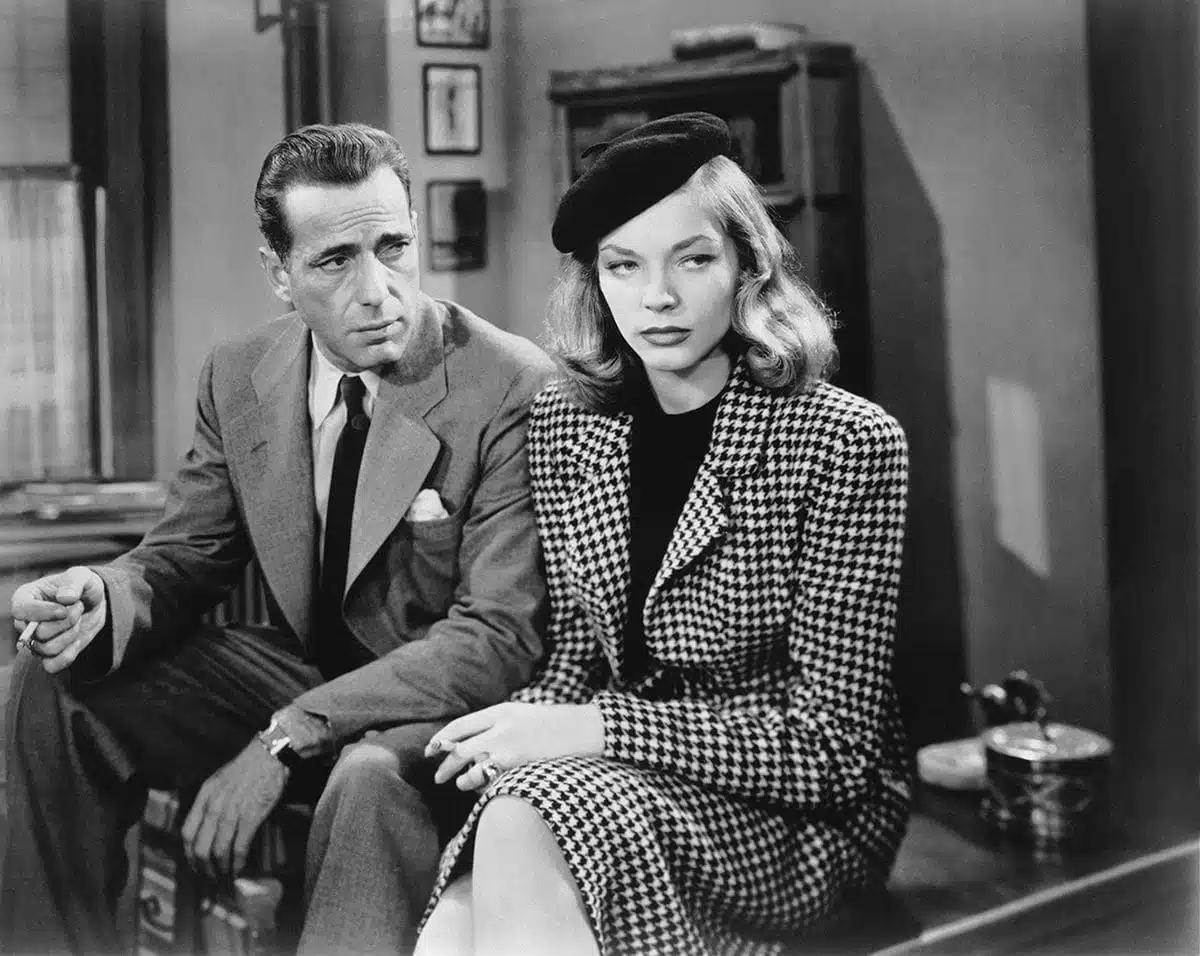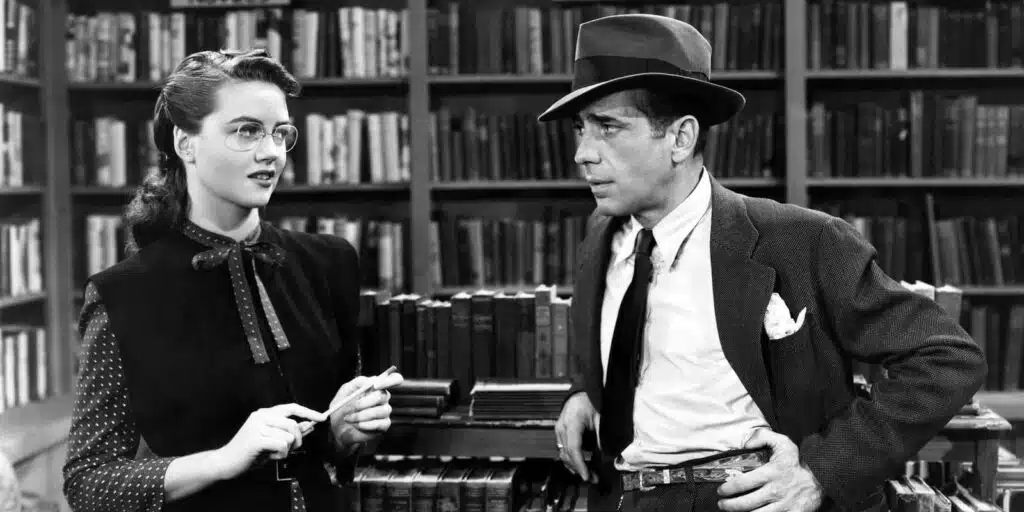The older it gets, the better 1946’s The Big Sleep looks. When it was new, Howard Hawks’s adaptation of Raymond Chandler’s famously unfathomable story was rooted in reality – the clothes, the cars, the language, the streets of LA. Since then, as it’s become detached from the everyday, it has risen unimpeded into the mythic.
The opening scene sets the tone. A detective, Philip Marlowe, arriving at the mansion of General Sternwood (Charles Waldron), where the sick old man lives in an orchid house, staying alive on the heat, while his daughters run wild with his money. One of them, the general informs Marlowe, has got into some trouble. Can Marlowe fix it?
That’s all the set-up required for what is to follow, a strange chase through the twilit Los Angeles of the time, where hot women and cold men, drugs, pornography and the suggestion of homosexuality (just a trace of a suggestion – the original book has more) combine in a heady fug of rotten exotica. “Corrupt blood,” as the General puts it. There’s not a woman in this film who isn’t moist in the gusset, not a man, Marlowe excluded, who isn’t in some respects impotent, starting with the General. Notice the General and Marlowe’s opening small talk about orchids, an effete hothouse plant. Does Marlowe like them, inquires the General politely. Marlowe does not. And the general knows he has his man.
The wild daughter is Carmen (Martha Vickers) but the one Marlowe will tangle with – arrogance and hostility turning to grudging respect and something more – is Vivian, played by Lauren Bacall. Between the film’s production and its release it sat on the shelves for over a year, while Warner’s offloaded their run of war movies before the end of the Second World War made them obsolete. There was time for reshoots, which Warner’s made use of, to capitalise on the scandalous romance of Bogart and Bacall (he married and 44; she a slip of a 20-year-old) then filling up the newspapers.
Unusually, there are now two versions of the film. The 1945 one, once thought lost, with more screen time for Martha Vickers, whose Carmen is a piece of work. And the 1946 one, with more Bogie and Bacall scenes. If yours has the scene where Bogart and Bacall have an innuendo-laden exchange in a restaurant about the training of horses – “I like to see them work out a little first, see if they’re front runners or come from behind” etc etc – then you’re watching the reshot/recut version (Roger Ebert’s preferred cut, though the original has its fans too).
The big sleep is, of course, death, but there is something dreamlike also about the film. Are any of the characters real? Are we in a narcotic reverie? Max Steiner’s great score shimmers away mesmerically early on, as if to suggest something detached from reality is going on.
There’s also a blink-and-miss-it aspect to the story, which doesn’t affect the enjoyment of the film one iota. You could easily watch The Big Sleep and not fully realise that Carmen’s bit of trouble is as a result of the pornographic pictures taken of her while she was off her face on… opium, probably. Heroin, possibly.
Talking of goings-on south of the border, there is the famous scene between Bogart and a then mostly unknown Dorothy Malone, where he walks into the Acme Book Shop, asks a couple of harmless questions of its proprietor (Malone), and seconds later the two of them have agreed to while away an agreeable afternoon together having sex. Another case of reading between the lines, but watch the way Bogart and Malone go at it.
Which brings us to the bottom line with this movie. It’s all about the dialogue. William Faulkner, Jules Furthman and Leigh Brackett may have been brought in to wrangle the original novel onto the screen, but they largely left Raymond Chandler’s dialogue intact. Sizzling chemistry apart, it’s this zinging repartee that keeps the film fresh. No one talks in this film when they can joust.
In the great “who’s best?” debate – Sam Spade or Philip Marlowe – that’s what it comes down to. If it’s movies with exquisitely turned plots you’re after, go for Dashiell Hammett’s Sam Spade. If it’s dialogue, then Chandler’s Philip Marlowe is your man. Either way you get the great Humphrey Bogart – he played both.
The Big Sleep – Watch it/buy it at Amazon
I am an Amazon affiliate
© Steve Morrissey 2023


